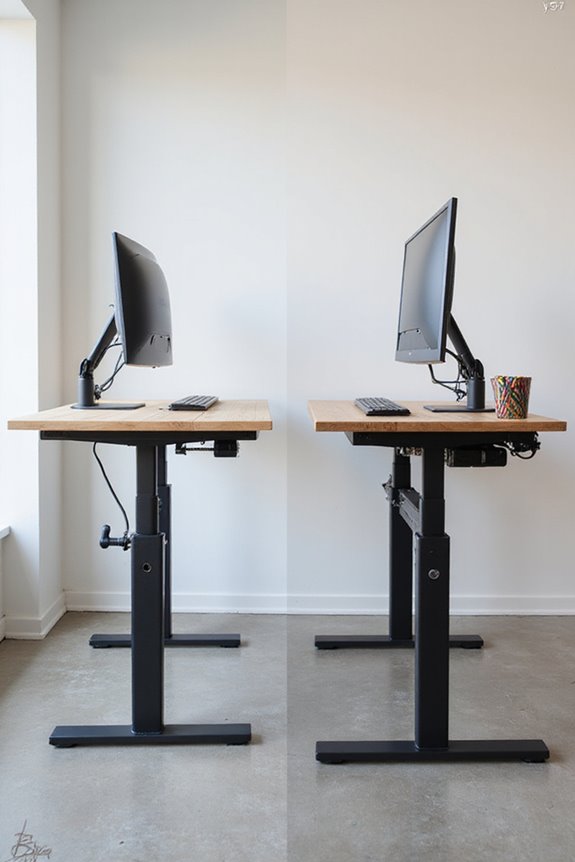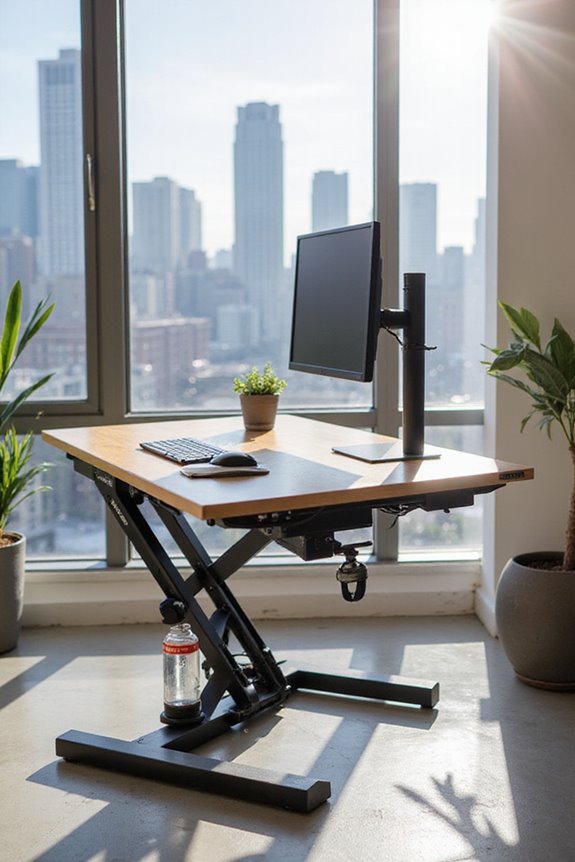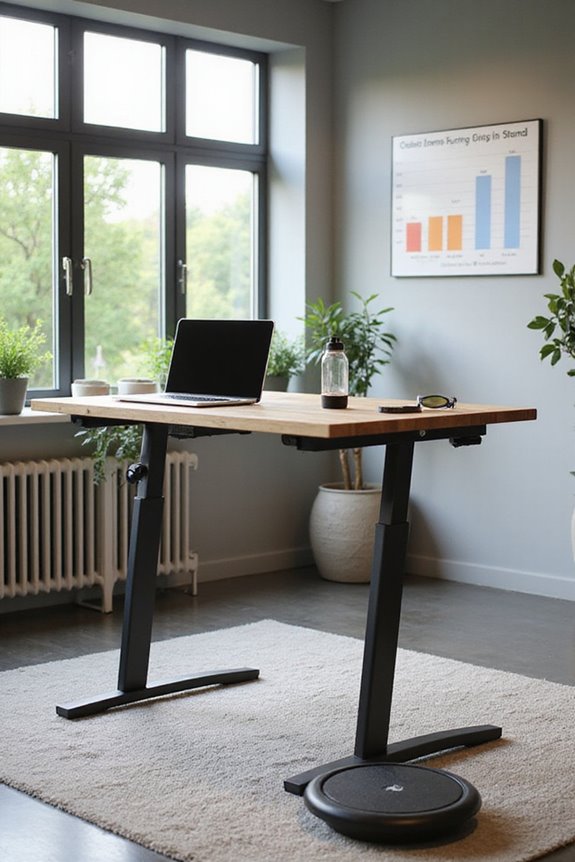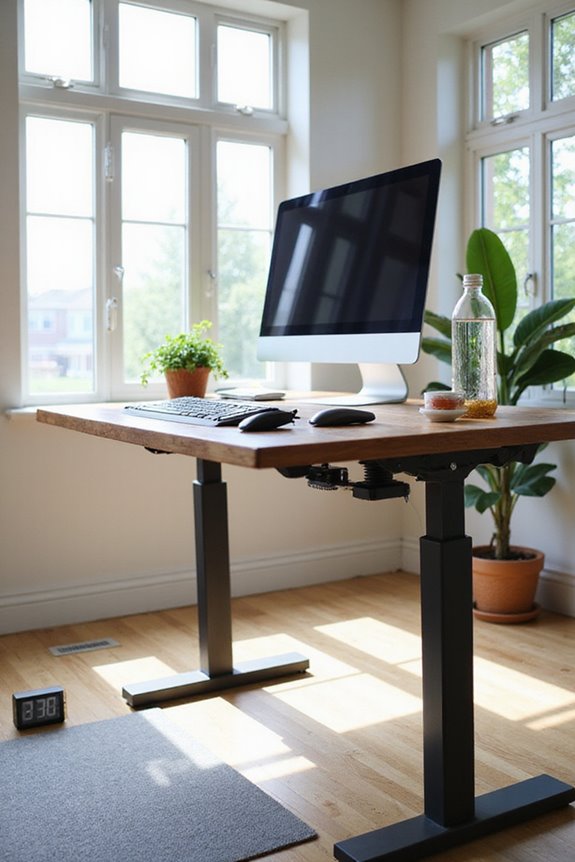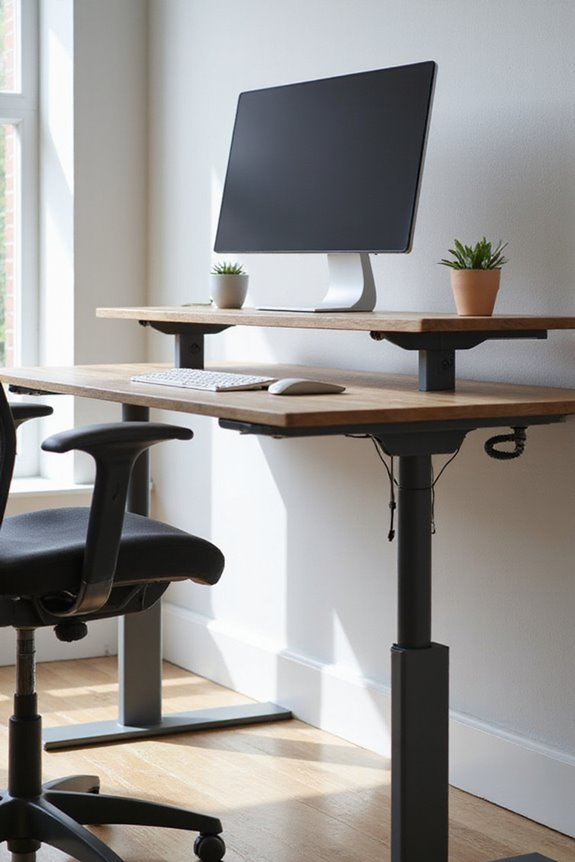When comparing electric and manual standing desks, the key differences lie in their adjustment mechanisms and user experience. Electric desks adjust height effortlessly with a button, providing customizable presets and silent operation, which enhances workflow. In contrast, manual desks require physical effort, often slowing adjustments. While electric models generally come at a higher price, they offer long-term durability and ergonomic benefits. If you’re interested in more details about features and accessories, there’s much more to explore.
Key Takeaways
- Electric standing desks offer effortless height adjustments with buttons, while manual desks require physical effort through levers or hand cranks.
- Electric models provide customizable height presets, enhancing user convenience, whereas manual options lack this feature.
- Electric desks adjust quickly at 1-2 inches per second, while manual desks are slower due to mechanical adjustments.
- Electric standing desks typically start at a higher price but offer long-term durability and ergonomic benefits compared to manual desks.
- While manual desks may last longer due to fewer electronic components, electric desks provide better user experience and mobility through push-button operation.
Adjustment Mechanism
When considering standing desks, one of the primary factors to evaluate is the adjustment mechanism. Electric desks typically feature a motorized system, allowing for effortless height adjustments with just the press of a button. This enhances the user experience considerably, as I can quickly switch between sitting and standing positions to maintain an ergonomic design. Additionally, electric desks often include multiple height presets for customizable transitions, catering to individual user preferences. In contrast, manual desks rely on mechanical levers, requiring physical effort to change heights, which can become tiresome over time. While manual desks are often more affordable and durable due to fewer moving parts, they lack the convenience and customization options found in electric models. Overall, selecting the right adjustment mechanism is essential for optimizing comfort and productivity in your workspace.
User Convenience

One significant aspect to contemplate in standing desks is user convenience, which can greatly influence your overall work experience. Electric standing desks excel in this area by providing precise height adjustments with just the push of a button, catering to different user preferences. I find that the ability to save preferred heights enhances user satisfaction, especially in shared workspaces where adjustments are frequent.
In contrast, manual desks require more effort and time, making them less convenient for those who adjust their desks often. Additionally, features like scheduling reminders for sitting and standing promote healthier work habits, a benefit absent in manual options. Overall, electric desks offer a more satisfying user experience, particularly for those valuing ease of use in their daily routines.
Speed and Efficiency
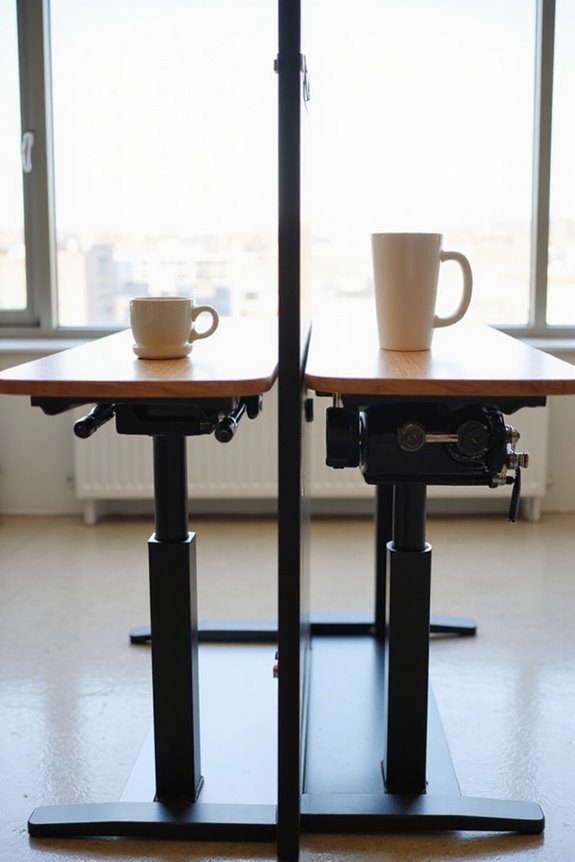
As I consider the speed and efficiency of standing desks, it’s clear that electric models hold a significant advantage over their manual counterparts. Electric desks adjust at a remarkable speed of 1-2 inches per second, making them ideal for those who frequently change their working height. In contrast, manual desks require physical effort through a hand crank, which slows down the adjustment process.
While electric desks do produce some operational noise, most operate quietly, typically under 45 dB. This minimizes disruptions during work. Moreover, many electric models come equipped with programmable presets, allowing for quick adjustments without hassle. Overall, the efficiency of electric standing desks enhances workflow and promotes ergonomic alignment, making them a practical choice for various work environments. Additionally, the adjustable height feature of these desks supports diverse user heights, accommodating a wide range of preferences and needs.
Cost and Value
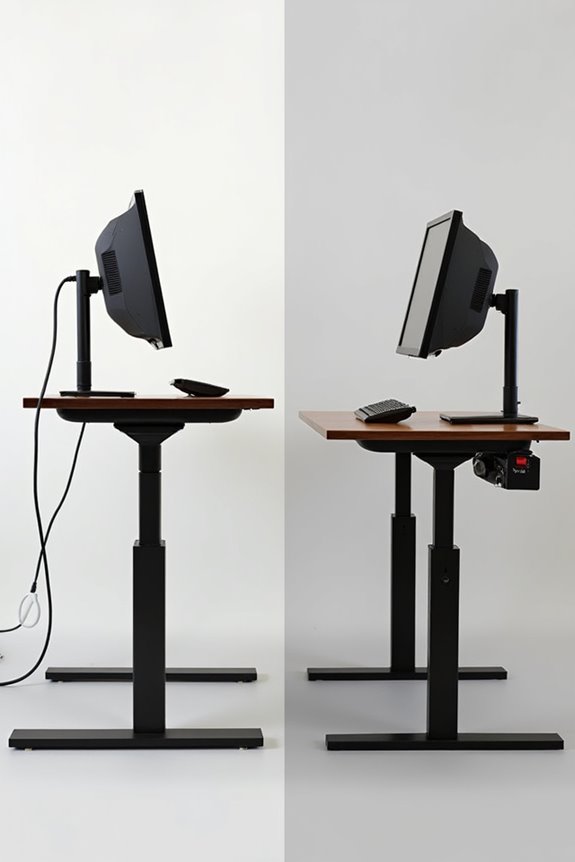
Understanding the cost and value of standing desks is essential for making an informed decision. When I conduct a price comparison, I find that electric desks typically start around $100, while manual options often come in at a lower initial price. However, this investment analysis reveals that electric models can save money in the long run due to their durability and lower replacement frequency.
For budget-conscious buyers, options like the Flexispot EC1 offer a balance of affordability and features. While manual desks may require less maintenance, the ergonomic benefits of standing desks can lead to improved health and productivity, justifying their cost. Ultimately, choosing the right desk involves weighing initial costs against potential long-term advantages.
Durability and Mobility

When considering durability and mobility, it’s important to evaluate how each type of standing desk meets the demands of daily use. Manual desks typically have fewer electronic components, which means they tend to have greater component longevity and reliability. However, they may struggle under heavy use and require regular maintenance, like lubrication. Electric desks, on the other hand, often boast higher weight capacities and robust build quality, making them suitable for more demanding environments. Their push-button convenience allows for quick adjustments, enhancing mobility and user experience. While both types can last for years, electric desks may offer a sturdier option with less maintenance, particularly for those who frequently switch between sitting and standing. Additionally, user-friendly assembly is essential for ensuring that both types of desks are set up correctly to maximize their durability and functionality.
Features and Accessories
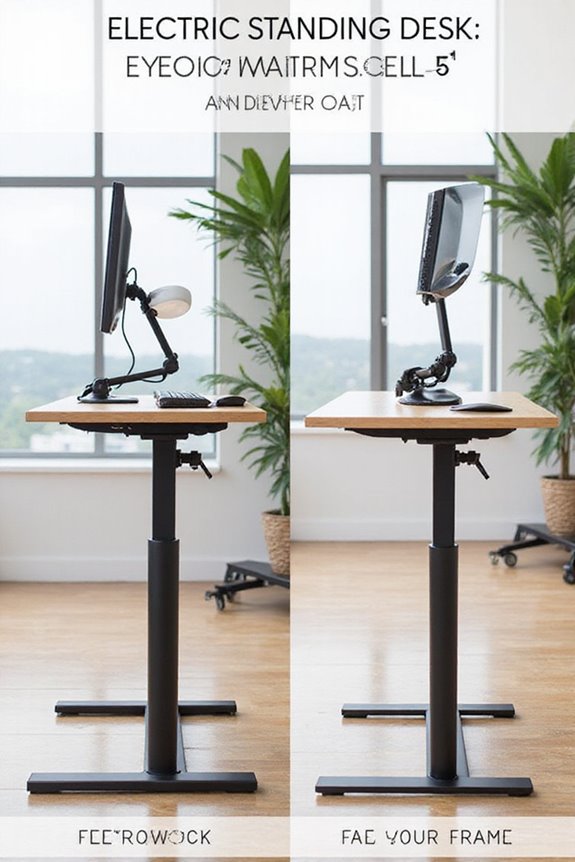
While both electric and manual standing desks come with various features and accessories that enhance their functionality, the distinctions between them can greatly impact your workspace experience. Electric desks typically offer more advanced customization options, like programmable height presets and tilt adjustments, allowing for better ergonomic enhancements. They adjust quickly and quietly, making shifts seamless.
In terms of accessories, both types can utilize monitor arms and keyboard trays to optimize your workspace. However, electric desks often come with built-in cable management and can integrate powered accessories more easily. You might also find features like wireless charging in electric models, which add convenience. Ultimately, the choice between these desks depends on your specific needs and how much you value these features.
Frequently Asked Questions
How Do I Choose the Right Height for My Standing Desk?
Choosing the right height for my standing desk involves finding the ideal height that promotes good desk ergonomics. I make certain my elbows are at 90 degrees and my monitor’s at eye level for comfort.
Can I Convert a Manual Desk to Electric?
I’ve considered a manual desk conversion to an electric upgrade, but it’s complex and costly. It’s often easier just to invest in a new electric desk for convenience and features I really want.
What Maintenance Do Electric Standing Desks Require?
Think of your electric desk as a loyal companion; it needs care too! Regular electric desk maintenance—like cleaning, lubrication, and inspections—can outshine manual desk upkeep, ensuring smooth operation and longevity for years ahead.
Are There Health Benefits to Using Standing Desks?
I’ve noticed significant ergonomic advantages since using a standing desk. It not only improves my posture but also gives me a productivity boost, keeping me energized and focused throughout the day.
How Much Space Do I Need for a Standing Desk?
When considering space requirements for a standing desk, I recommend checking desk dimensions between 48 to 60 inches wide and ensuring enough clearance for movement. It’s essential for a comfortable and efficient workspace setup.

